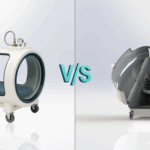Cardiac arrhythmia is a group of conditions in which the electrical activity of the heart is irregular or is faster or slower than normal.
Some arrhythmias are life-threatening medical emergencies that can cause cardiac arrest and sudden death. Others may cause aggravating symptoms, such as an awareness of a different heart beat, or palpitation, which can be annoying. Some are quite minor and can be regarded as normal. Sinus arrhythmia is the mild acceleration followed by slowing of the normal rhythm that occurs with breathing.
In adults the normal resting heart rate ranges from 60 beats per minute to 100 beats per minute. The normal heart beat is controlled by a small area in the upper chamber of the heart called the sinoatrial node or sinus node. The sinus node contains specialized cells that have spontaneous electrical activity that starts each normal heart beat.
In an adult, a heart rate faster than 100 beats/minute is considered tachycardia. This number varies with age, as the heartbeat of a younger person is naturally faster than that of an older person’s. During exercise the sinus node increases its rate of electrical activity to accelerate the heart rate. Such normal fast rate that develops is called sinus tachycardia. In contrast, arrhythmias that are due to fast, abnormal electrical activity can cause tachycardias that are dangerous. If the ventricles of the heart experience one of these tachycardias for a long period of time, there can be deleterious effects. Individuals may sense a tachycardia as a pounding sensation of the heart, known as palpitations.
If a tachycardia lowers blood pressure it may cause lightheadedness or dizziness, or even fainting (syncope). If the tachycardia is too fast, the pump function of the heart is impeded, and rarely may lead to sudden death.
Most tachycardias are not dangerous. Anything that increases adrenaline or its effects on the heart will increase the heart rate and potentially cause palpitations or tachycardias. Causes include stress, ingested or injected substances (ie: caffeine, amphetamines, alcohol—see Holiday heart syndrome), and an overactive thyroid gland (hyper-thyroidism).
Fibrillation; A serious variety of arrhythmia is known as fibrillation. The muscle cells of the heart normally function together, creating a single contraction when stimulated. Fibrillation occurs when the heart muscle begins a quivering motion due to a disunity in contractile cell function. Fibrillation can affect the atrium (atrial fibrillation) or the ventricle (ventricular fibrillation); ventricular fibrillation is imminently life-threatening. Atrial fibrillation is the quivering, chaotic motion in the upper chambers of the heart, known as the atria. Atrial fibrillation is often due to serious underlying medical conditions, and should be evaluated by a physician. It is not typically a medical emergency.
Ozone Therapy can help people suffering from cardiac arrhythmia. Ozone Therapy speeds up recovery of scar tissues, increase oxygen levels in the blood, reduce stress, fight anxiety and help strengthen the arterial walls. It is also very important to get some exercise, just make sure to regulate your heartbeat and stop as soon as you feel dizzy or light headed. Consult your GP before making any major lifestyle changes.
For more on Ozone Therapy, contact us:
Salvagente
+27 (0)72 422 1964
Sign up below for our weekly newsletter to keep up to date on the latest news:
[contact-form][contact-field label=’Name’ type=’name’ required=’1’/][contact-field label=’Email’ type=’email’ required=’1’/][/contact-form]








Leave a Reply